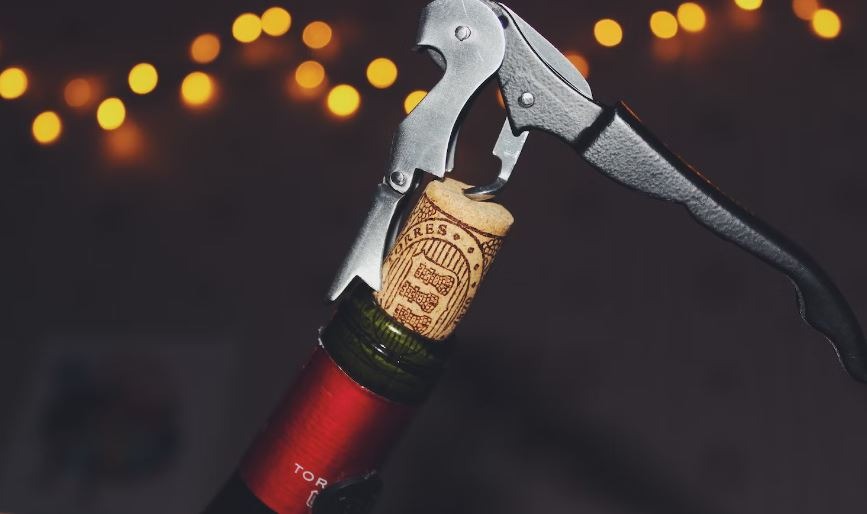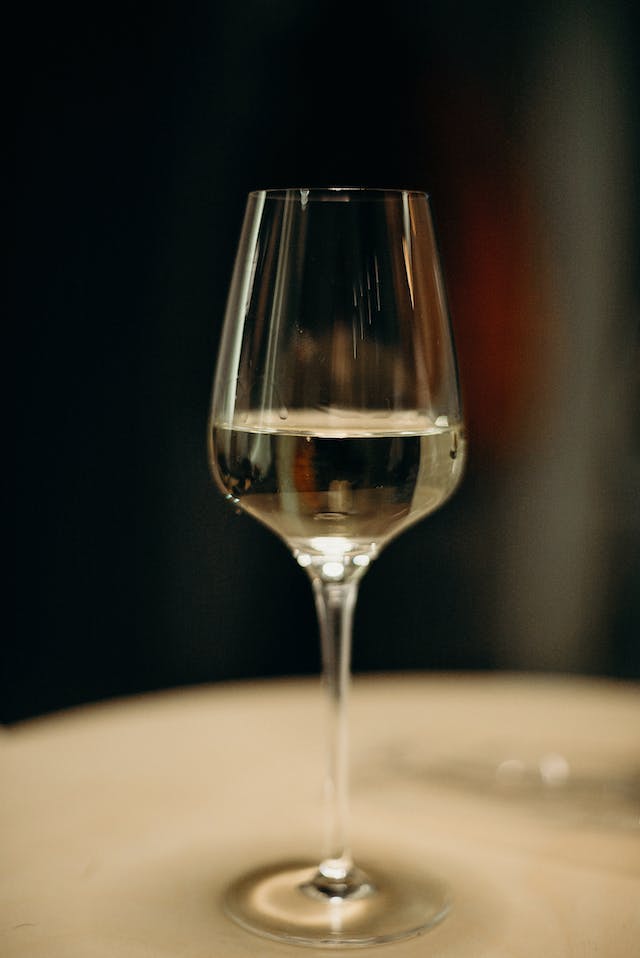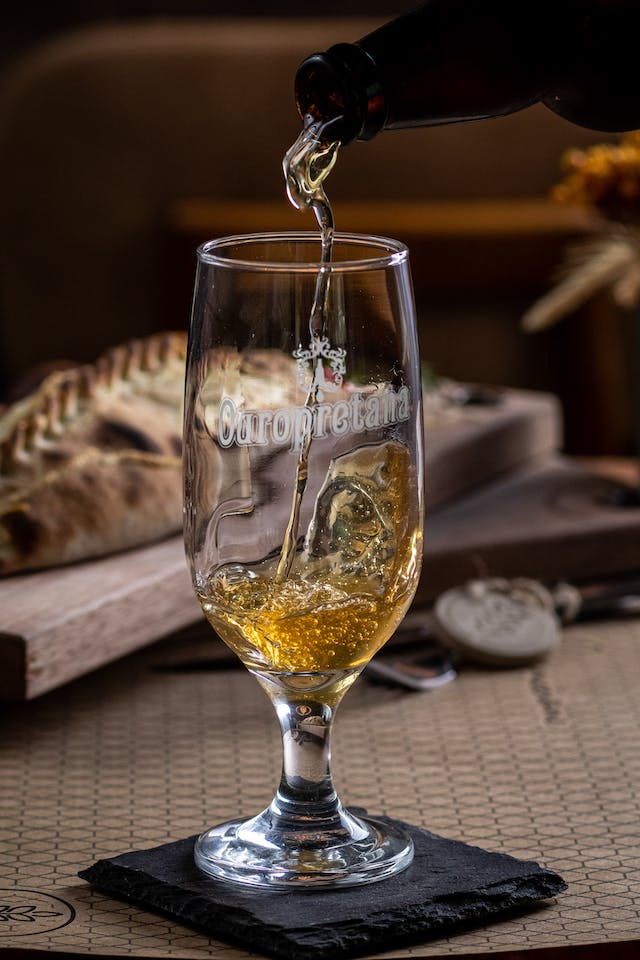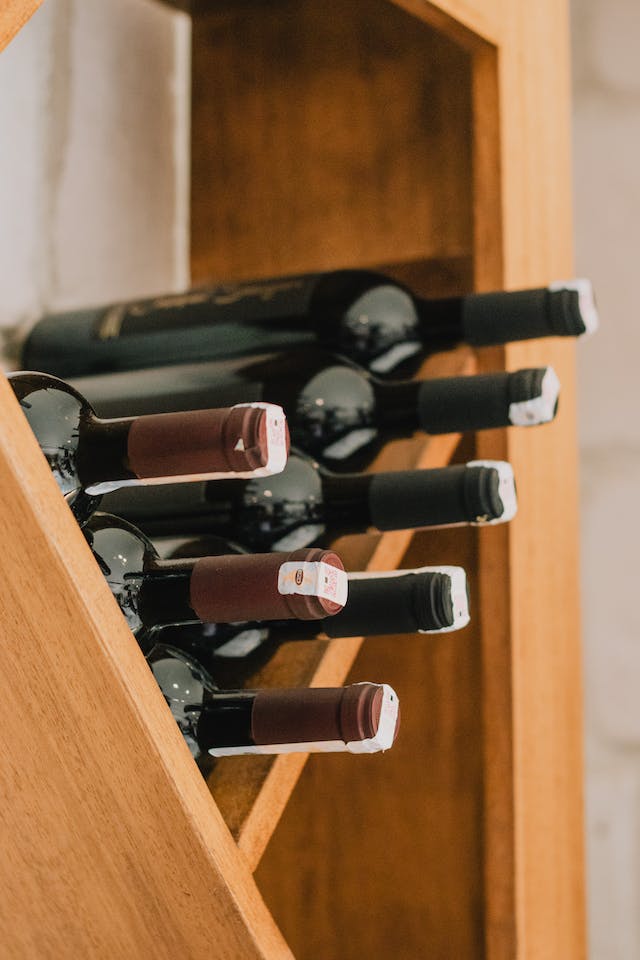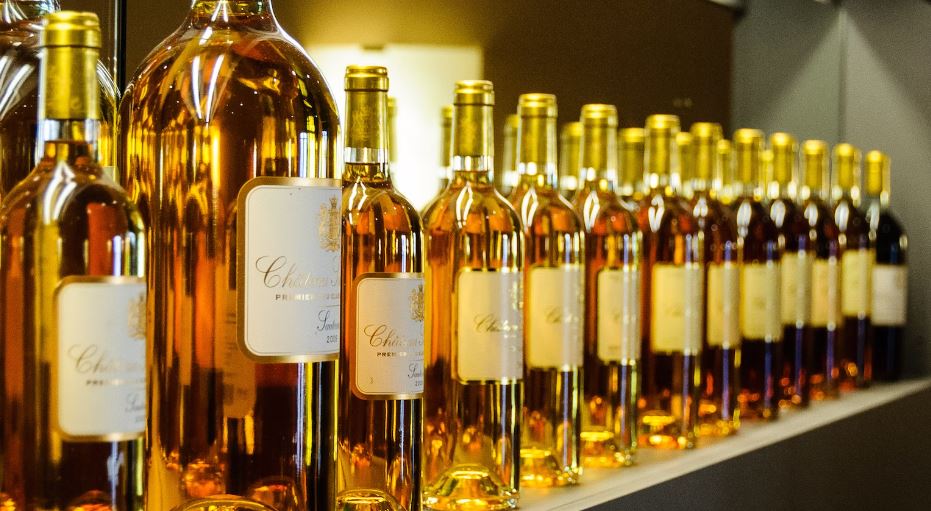Introduction
You just opened a bottle of your favorite wine, poured a glass or two, and savored every sip. But life happens, and that bottle ends up sitting on your kitchen counter for days, maybe even weeks. Now, you’re left wondering, how long does wine really last once it’s been uncorked?
Join on this journey through the tantalizing world of opened wine bottles as we uncork the secrets behind their shelf life and explore the art of preserving those precious drops of liquid luxury.
Several variables, such as the type of wine, how it is stored, and individual preference, can affect the shelf life of an opened bottle of wine.
Here are some general guidelines for how long different types of wine can last once opened:
Red Wine
Once opened, red wines often last longer than white wines. A standard bottle of red wine can remain drinkable for 3-5 days if stored in a cool, dark place with a wine stopper or vacuum pump to remove excess air.
When it comes to how long red wine can last once opened, here are some guidelines to keep in mind:
1. Store in the Refrigerator
To extend the life of an opened bottle of red wine, store it in the refrigerator. The cooler temperature slows down oxidation, which is the primary process that causes wine to deteriorate once exposed to air.
2. Use a Wine Stopper
Invest in a quality wine stopper or vacuum pump to remove excess air from the bottle. This helps reduce the rate of oxidation and preserves the wine’s flavor.
3. Consume Within 3-5 Days
On average, an opened bottle of red wine can remain drinkable for 3-5 days when stored in the refrigerator with a wine stopper. Some robust red wines may last even longer, while lighter reds may have a shorter lifespan.
4. Think about the Traits of Wine
The longevity of red wine can also depend on the specific characteristics of the wine. High-tannin wines, like Cabernet Sauvignon and Syrah, tend to last longer once opened than lighter, low-tannin wines, such as Pinot Noir or Beaujolais.
5. Watch for Oxidation
As red wine oxidizes, it can lose its vibrant fruit flavors and develop a more muted, flat taste. Be mindful of the changes in aroma and taste as you approach the 3-5 day guideline.
6. Seal the Bottle Properly
When resealing the bottle, make sure the cork or screw cap is tightly sealed, and use the wine stopper to minimize air exposure.
7. Consider Wine Preservers
You may wish to invest in wine preservation systems that use inert gases (like argon) to establish a barrier of protection over the wine if you frequently find yourself with partially consumed bottles of wine. These systems can extend the wine’s life even further.
Remember that individual bottles of red wine may vary in how long they stay fresh once opened. Factors like the wine’s age, quality, and storage conditions can all influence its shelf life. While these guidelines are generally applicable, it’s always a good idea to taste the wine before serving it to ensure it hasn’t deteriorated beyond your preferences.
White Wine
White wines are generally more delicate and can start to lose their freshness more quickly than reds. On average, an opened bottle of white wine can last 1-3 days in the refrigerator with a wine stopper.
When it comes to how long white wine can last once opened, it’s generally more delicate than red wine due to its lower tannin levels and higher acidity.
Following are some pointers to bear in mind:
1. Refrigerate Promptly
White wine should be refrigerated promptly after opening to slow down oxidation, which can cause the wine to lose its freshness and flavor.
2. Use a Wine Stopper
Invest in a good-quality wine stopper or vacuum pump to remove excess air from the bottle. Reducing exposure to oxygen helps preserve the wine’s quality.
3. Consume Within 1-3 Days
On average, an opened bottle of white wine can stay reasonably fresh for 1-3 days when stored in the refrigerator with a wine stopper. Lighter white wines (e.g., Sauvignon Blanc, Pinot Grigio) may have a shorter lifespan, while more full-bodied whites (e.g., Chardonnay) may last a bit longer.
4. Watch for Aromas and Flavors
Be attentive to changes in the wine’s aroma and taste as you approach the 1-3 day guideline. White wine can lose its freshness and develop off-putting characteristics if it’s been open too long.
5. Consider Wine Characteristics
The specific characteristics of the white wine can influence its longevity. High-acid wines like Riesling may retain freshness longer, while oaked Chardonnays can be more vulnerable to oxidation.
6. Properly Seal the Bottle
When resealing the bottle, ensure that the cork or screw cap is tightly sealed, and use the wine stopper to minimize air exposure.
7. Use Wine Preservers
If you often find yourself with partially consumed bottles of white wine, you can explore wine preservation systems that use inert gases like argon to create a protective barrier over the wine. These systems can extend the wine’s life.
8. Chill Before Serving
If you’ve stored the opened bottle in the refrigerator, allow it to warm up slightly to the ideal serving temperature before pouring, as white wine is best enjoyed slightly chilled.
Keep in mind that these are general guidelines, and the longevity of an opened bottle of white wine can vary depending on factors like the wine’s age, quality, and storage conditions. Always use your senses to assess the wine’s quality before serving it to ensure it meets your taste preferences.
Sparkling Wine
Once opened, sparkling wines like Champagne and Prosecco quickly lose their fizz. You should consume them within 1-3 days and use a specialized sparkling wine stopper or airtight closure to help preserve the bubbles.
Sparkling wines, including Champagne and Prosecco, have a shorter shelf life once opened compared to still wines due to their effervescence. Here are some guidelines for how long sparkling wine can last once opened:
1. Refrigerate Immediately
After opening a bottle of sparkling wine, it’s essential to refrigerate it as soon as possible. The cold temperature helps slow down the loss of carbonation and preserves the wine’s freshness.
2. Use a Specialized Stopper
Invest in a specialized sparkling wine stopper or closure designed to maintain the wine’s effervescence. Regular wine stoppers may not be effective at preserving the bubbles.
3. Consume Within 1-3 Days
On average, an opened bottle of sparkling wine can retain its bubbles and flavor for 1-3 days when stored in the refrigerator with a proper stopper. However, it’s best to consume it as soon as possible to enjoy the full effervescence.
4. Minimize Air Exposure
When resealing the bottle, make sure the stopper is tightly secured to minimize the wine’s exposure to air, which can cause the bubbles to dissipate more quickly.
5. Watch for Bubbliness
The primary concern with opened sparkling wine is the loss of carbonation. If the wine starts to lose its fizz and becomes flat, it’s time to enjoy it sooner rather than later.
6. Chill Before Serving
Just like with unopened sparkling wine, make sure to chill the opened bottle to the appropriate serving temperature before pouring. Cold temperatures help maintain the effervescence.
7. Use a Wine Preserver
Some wine preservation systems are designed specifically for sparkling wine and use inert gases to create a protective barrier. These can extend the life of your opened bottle.
8. Avoid Shaking or Agitating
Handle the bottle gently to avoid shaking or agitating the wine, which can accelerate the loss of carbonation.
Keep in mind that the effervescence of sparkling wine makes it more susceptible to rapid deterioration once opened. As a result, it’s best to plan to finish an opened bottle within a short time frame, ideally on the same day or within 1-3 days. Enjoying it sooner rather than later will ensure you experience the full sparkle and flavor of the wine.
Fortified Wine
Fortified wines like Port, Sherry, and Madeira can last longer than regular table wines once opened. They can be drinkable for several weeks to several months if stored in a cool, dark place.
Due to their greater alcohol level and fortification process, fortified wines like Port, Sherry, and Madeira have a longer shelf life once opened than typical table wines. Here are some guidelines for how long fortified wine can last once opened:
1. Re-Seal the Bottle Properly
After pouring from an opened bottle of fortified wine, make sure to reseal it tightly with its original cork or cap.
2. Store Upright
Unlike regular wines, fortified wines are less susceptible to oxidation. Storing them upright helps minimize the surface area exposed to air.
3. Keep in a Cool, Dark Place
Store the opened bottle of fortified wine in a cool, dark place away from direct sunlight and temperature fluctuations. This helps maintain its quality.
4. Consume Within Several Weeks to Months
Fortified wines can remain drinkable for an extended period compared to table wines. Depending on the type and style, an opened bottle of fortified wine can last anywhere from several weeks to several months. Here’s a rough estimate for different fortified wines:
- Tawny Port. Tawny Ports are more resilient once opened and can last several weeks to a couple of months.
- Ruby Port. Ruby Ports, being younger, may last a few weeks.
- Sherry. Dry Sherry varieties can last several weeks to a few months, while sweet Sherries may last even longer.
- Madeira. Madeira wines are known for their longevity once opened and can last for months to a year or more.
5. Check for Changes
Monitor the taste and aroma of the fortified wine as time goes on. If you notice a significant change in flavor or aroma, it may be time to finish the bottle.
6. Consider Wine Preservers
If you want to extend the shelf life of an opened bottle of fortified wine even further, consider using a wine preservation system that uses inert gases (e.g., argon) to create a protective layer over the wine.
7. Serve at the Appropriate Temperature
Fortified wines are often best enjoyed at specific temperatures. Make sure to serve them according to their style (e.g., chilled for dry Sherry, room temperature for vintage Port).
It’s important to note that while fortified wines have a longer lifespan once opened compared to table wines, their flavor can change over time. Some people enjoy the evolving character of fortified wines as they oxidize, while others prefer them when they are fresh. As always, use your palate as your guide and consume the wine within a timeframe that suits your taste preferences.
Dessert Wine
Dessert wines, like Sauternes or Ice Wine, can last longer than table wines once opened due to their high sugar content. They can often be enjoyed for a few weeks if stored properly.
Dessert wines, such as Sauternes, Ice Wine, and Late Harvest wines, can have varying shelf lives once opened, depending on their sugar content and how they are stored. Here are some guidelines for how long dessert wine can last once opened:
1. Re-Seal the Bottle Properly
After pouring from an opened bottle of dessert wine, make sure to reseal it tightly with its original cork or cap.
2. Store Upright
Dessert wines, especially those with high sugar content, are less susceptible to oxidation. Storing them upright helps minimize the surface area exposed to air.
3. Keep in a Cool, Dark Place
Store the opened bottle of dessert wine in a cool, dark place away from direct sunlight and temperature fluctuations. This helps maintain its quality.
4. Consume Within Several Weeks to Months
The shelf life of dessert wine can vary depending on the type and style. Here are a few widespread estimates:
Sauternes and Late Harvest Wines
These sweet wines can often last several weeks to a few months if stored properly. The high sugar content helps preserve them.
Ice Wine
Ice wines, known for their intense sweetness, can have a longer shelf life once opened and may last for several months to a year or more.
Fortified Dessert Wines
Fortified dessert wines like Port, Sherry, and Madeira, can have even longer lifespans once opened, potentially lasting several months to years.
5. Check for Changes
Regularly monitor the taste and aroma of the dessert wine. If you notice any significant changes, such as a loss of freshness or excessive oxidation, it may be time to finish the bottle.
6. Consider Wine Preservers
If you want to extend the shelf life of an opened bottle of dessert wine further, consider using a wine preservation system that uses inert gases (e.g., argon) to create a protective layer over the wine.
7. Serve at the Appropriate Temperature
Dessert wines are often best enjoyed at specific temperatures. Make sure to serve them according to their style and recommendations (e.g., chilled for Ice Wine, at cellar temperature for some fortified dessert wines).
While dessert wines generally have longer lifespans once opened compared to table wines, the precise duration can vary based on factors like sugar content, wine style, and storage conditions. As with other wines, use your taste preferences as a guide and consume the wine within a timeframe that suits your liking.
Understanding how long wine can last once opened is essential for maximizing your enjoyment of these delightful beverages. Different types of wine have varying lifespans once the seal is broken, influenced by factors such as the wine’s style, sugar content, storage conditions, and personal preferences.
The following are some salient points to bear in mind:
Refrigeration and Proper Sealing
Refrigerating opened wine and using appropriate wine stoppers or preservation systems can significantly extend its lifespan by slowing down oxidation.
Wine Characteristics Matter
The specific characteristics of the wine, including its acidity, tannin levels, and sugar content, play a role in determining how long it can remain enjoyable once opened.
Monitor Changes
Regularly check for changes in aroma and taste as an opened bottle of wine ages. Trust your palate to determine when the wine is at its best.
Wine Style Affects Lifespan
Red, white, sparkling, fortified, and dessert wines all have different lifespans once opened. Understanding the characteristics of each type can help you plan your consumption accordingly.
Wine Preservation Tools
Invest in wine preservation tools and systems, such as vacuum pumps and inert gas solutions, to help extend the life of opened bottles.
The Proper Temperature for Serving
Serving wine at the appropriate temperature enhances the tasting experience, even for opened bottles.
Personal Preference
Ultimately, the ideal time to consume an opened bottle of wine depends on your personal taste preferences. Some may prefer the evolving flavors of aged wine, while others may prefer the freshness of a recently opened bottle.
Conclusion
It’s important to note that the quality of the wine may deteriorate over time once opened, especially if it’s not stored properly. The rate of deterioration can also vary depending on the specific wine and its characteristics. It’s always best to taste the wine before serving it to ensure it meets your standards.
By following these guidelines and paying attention to the unique qualities of each wine, you can ensure that your opened bottles of wine continue to bring joy and delight to your palate for as long as possible. Cheers to savoring every drop!
